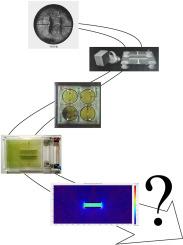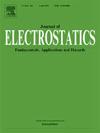High-voltage electrostatic slides: Are they still relevant for teaching in the era of numerical simulations?
IF 2.1
4区 工程技术
Q3 ENGINEERING, ELECTRICAL & ELECTRONIC
引用次数: 0
Abstract
The teaching of electrostatics has been a cornerstone of physics and engineering education for centuries. Its focus has evolved significantly, transitioning from a 19th-century practical approach represented by Ganot's textbooks to a predominantly theoretical treatment in the 20th century, often presented as an introductory course to more complex electromagnetic problems. By the time the industrial applications of electrostatics, became prominent in the mid-20th century (particularly in plastics manufacturing), practical electrostatics had largely disappeared from student textbooks. However, during the first half of the 20th century, specialized companies began to develop science education tools for schools and universities which included electrostatics demonstrations. In Spain, ENOSA became a remarkable example, producing a wide range of educational materials for teaching science. Among their contributions were materials designed to demonstrate electrostatic principles. Notably, this company developed slides for visualizing electrostatic fields using specific electrode arrangements, an overhead projector, and a Van de Graaff generator. These slides contained cells filled with insulating oil and magnetic insulating particles, which visually aligned and moved when exposed to high-voltage potentials applied to the electrodes. This work outlines a brief history of these electrostatic demonstration slides and provides a detailed description of how they were designed to be used, based on ENOSA's reference materials and practical experience. Furthermore, it compares the educational value of these physical demonstrations with modern simulation techniques, such as finite element software. The pedagogical question of this study is whether these electrostatic slides remain relevant in contemporary electrostatics courses. Are these physical demonstration tools worth the effort and risks associated with their setup, or have finite element simulations in the classroom rendered them obsolete? From the students' perspective, what are the educational benefits of these traditional tools compared to modern software-based approaches?

高压静电幻灯片:在数值模拟时代,它们还适用于教学吗?
几个世纪以来,静电学的教学一直是物理和工程教育的基石。它的重点发生了重大变化,从以加诺特教科书为代表的19世纪的实践方法过渡到20世纪的主要理论处理,通常作为更复杂的电磁问题的入门课程。到20世纪中期,静电学的工业应用(特别是在塑料制造业)变得突出时,实用的静电学在很大程度上已经从学生教科书中消失了。然而,在20世纪上半叶,专业公司开始为学校和大学开发包括静电演示在内的科学教育工具。在西班牙,ENOSA成为一个显著的例子,为科学教学制作了广泛的教育材料。他们的贡献之一是设计用于演示静电原理的材料。值得注意的是,该公司开发了用于可视化静电场的幻灯片,使用特定的电极排列,头顶投影仪和范德格拉夫发生器。这些载玻片包含充满绝缘油和磁性绝缘颗粒的细胞,当暴露在施加于电极的高压电位下时,它们在视觉上排列和移动。这项工作概述了这些静电演示幻灯片的简要历史,并根据ENOSA的参考材料和实际经验,详细描述了如何设计使用这些幻灯片。此外,它比较了这些物理演示与现代模拟技术,如有限元软件的教育价值。本研究的教学问题是这些静电幻灯片是否仍然适用于当代静电课程。这些物理演示工具值得为其设置付出努力和风险吗?还是课堂上的有限元模拟使它们过时了?从学生的角度来看,与现代基于软件的方法相比,这些传统工具的教育好处是什么?
本文章由计算机程序翻译,如有差异,请以英文原文为准。
求助全文
约1分钟内获得全文
求助全文
来源期刊

Journal of Electrostatics
工程技术-工程:电子与电气
CiteScore
4.00
自引率
11.10%
发文量
81
审稿时长
49 days
期刊介绍:
The Journal of Electrostatics is the leading forum for publishing research findings that advance knowledge in the field of electrostatics. We invite submissions in the following areas:
Electrostatic charge separation processes.
Electrostatic manipulation of particles, droplets, and biological cells.
Electrostatically driven or controlled fluid flow.
Electrostatics in the gas phase.
 求助内容:
求助内容: 应助结果提醒方式:
应助结果提醒方式:


